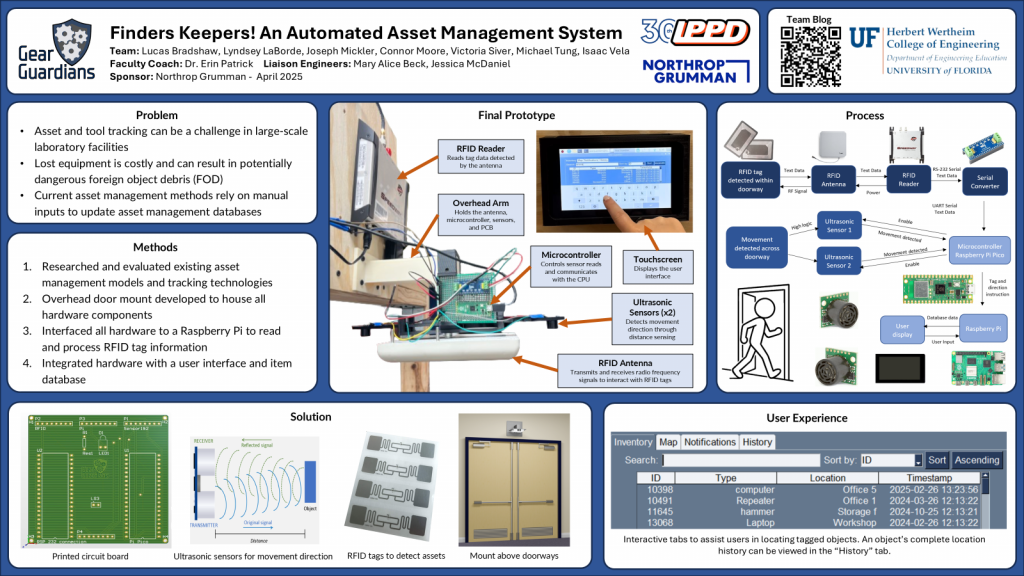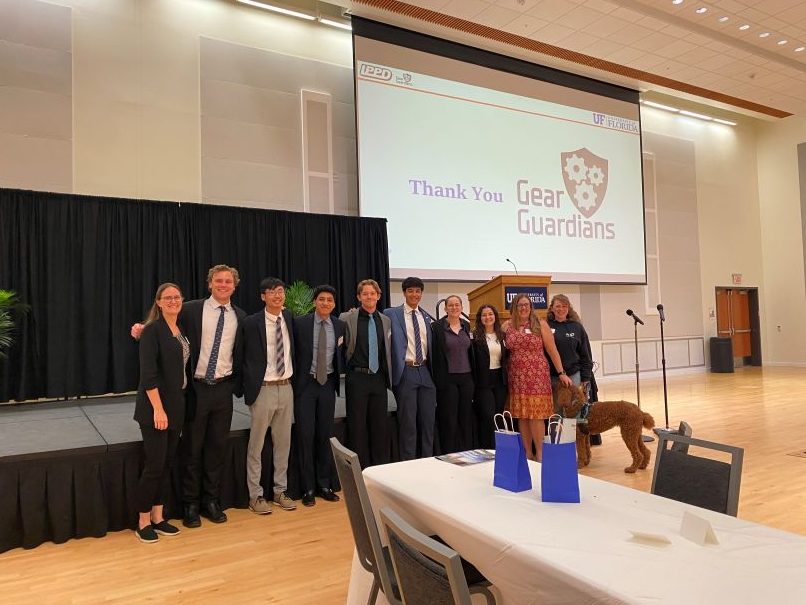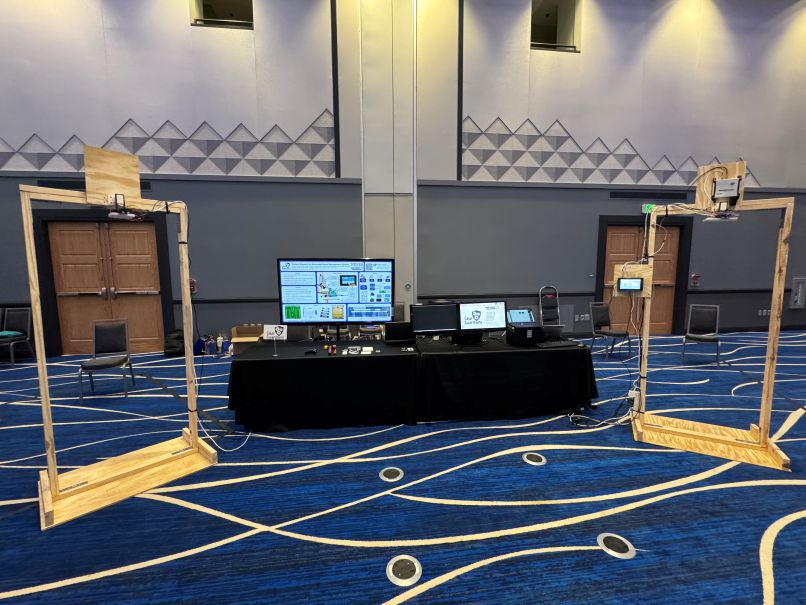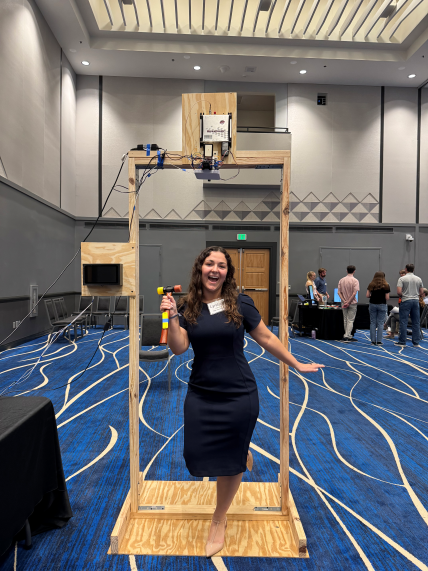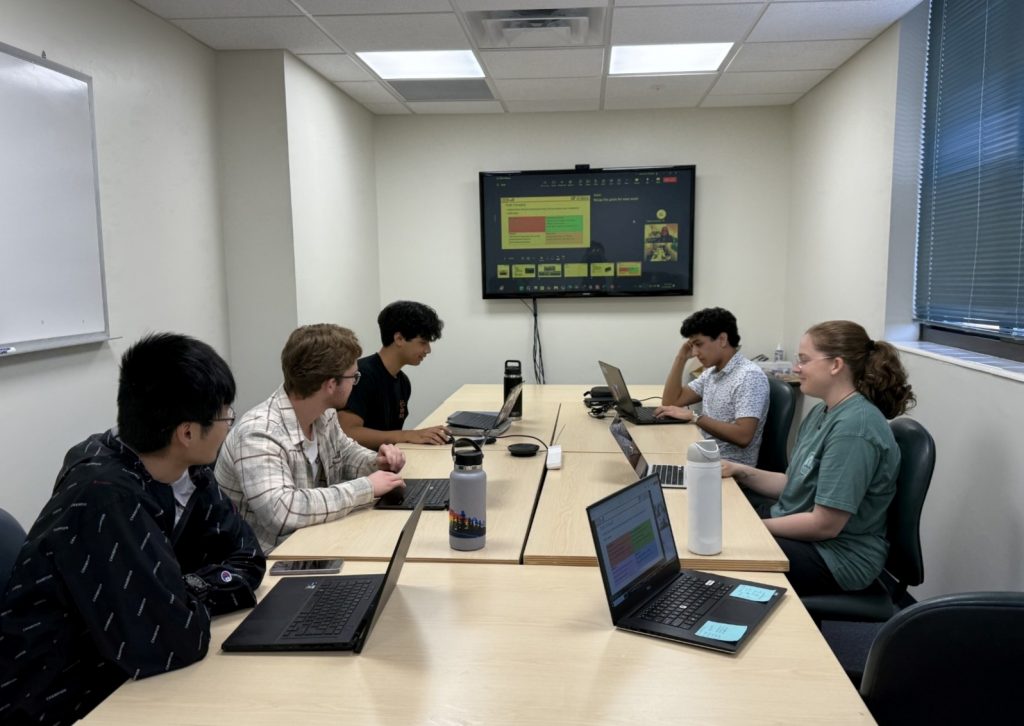…and we were an interdisciplinary engineering design team composed of mechanical, electrical, and computer engineering majors. What a journey IPPD has been for our team. Through the highs of getting our initial prototype to work and the lows of frying our sensors, the Gear Guardians persisted, and we were able to show our work off at the final design review (FDR) event on April 22nd. We were honored to give the keynote presentation at FDR as the 2025 IPPD exemplary team. We would like to thank our coach, Dr. Erin Patrick, and our industry liaisons, Mary Alice Beck and Jessica McDaniel, for all the work they have done for the team.
So, what’s next for the team? Victoria, Lyndsey, Joseph, Connor, and Michael will all be graduating soon while Isaac and Lucas have one more semester left. Lyndsey is starting her full-time role in Minnesota, Joseph is starting his full-time role in Wisconsin, and Victoria and Connor are both starting full-time roles in Florida. Michael will be attending Purdue University this fall to pursue a Ph.D. in electrical and computer engineering. This summer, Lucas will be interning in Kansas City while Isaac will be interning in Atlanta. Our careers are taking the team all over the country, and we are excited to pursue engineering opportunities while applying the skills we gained through IPPD. Go Gear Guardians!
